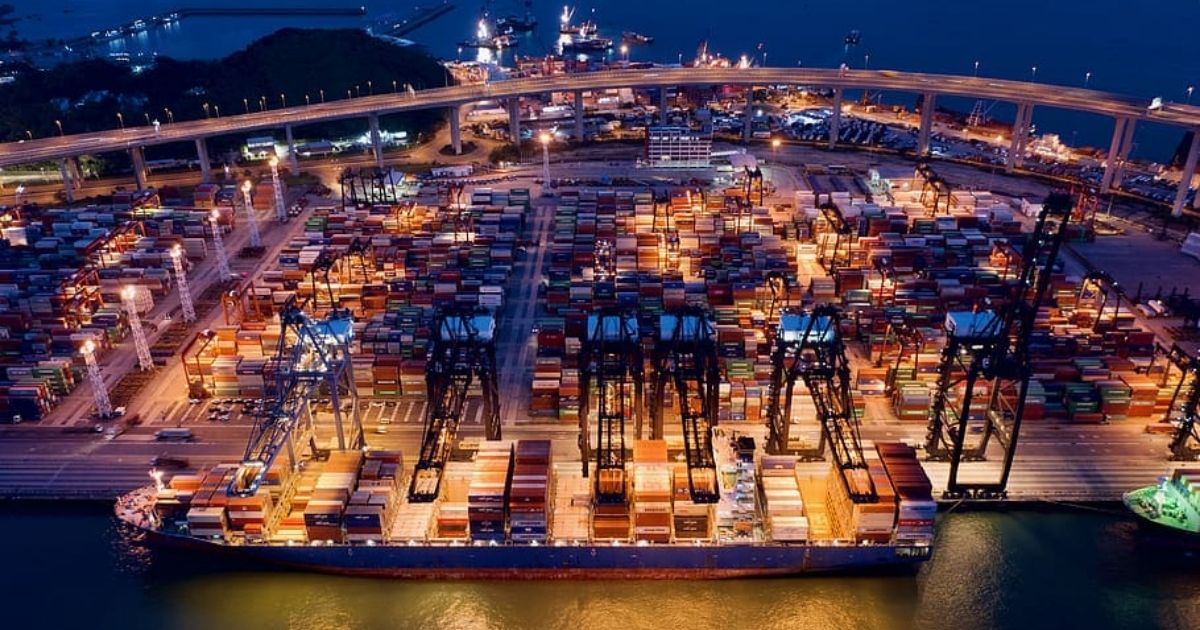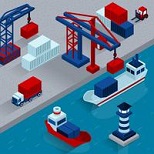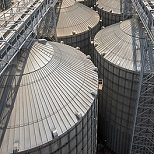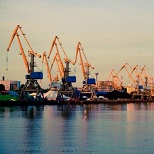Port Dues in Ukraine: Next Step to Reform?

Port Dues in Ukraine: Next Step to Reform?
Ukrainian Government has finally declared the Port-Landlord pattern to gradually replace the outdate ‘state enterprise’ model in the still rather post-Soviet economy of this sector. And as soon as the first progress started moving toward it, the voices have risen in respect of the port dues in Ukrainian ports. Indeed, Ukrainian port dues are regarded as the highest in the region exceeding those in neighbouring states with a sensitive margin. Moreover, the very system is rather complicated if compared to, say, Singapore port dues based simply on the purpose of call (cargo ops or bunkering etc.), rates per 100 GT of a calling ship, and duration of stay, with some discounts they call concessions and rebates applied on certain conditions. Or an almost similarly simple system applied in Rotterdam where ships GT rates and cargo rates are divided to 16 classes each, discounts granted; plus buoy, dolphin and public quay dues whichever pertinent and waste fee – all subject the fact of using them.
USSR heritage
The very system of port dues calculation and distribution has not changed much since 1991. The Merchant Shipping Code adopted by the country’s legislation body Verkhovna Rada (Supreme Council of People’s Deputies) as early as 1994, prior to all the other ex-Soviet states, was in fact mainly based on the old MSC of the USSR, so it inherited the not only the basic list of port dues, but also the very approach to their calculation, collection, and assignment. There are four old dues, namely the tonnage, lighthouse, berth, and canal (anchorage dues stopped recently) plus the newly introduced back in 1998 administrative dues which aim was to fund the IMO contributions and related expenses. All of them are stipulated as strictly purposeful, though the very list of purposes still does not exist despite continual urgings from the business side. Their calculation is based upon a vessel’s volume in cubic metres as per Tonnage Certificate.
Speaking on each dues, everything seems to be clear with the lighthouse dues which is remitted directly to the state enterprise Ukrainian Hydrographic Service that maintains all the navigational aids, AIS system, paper- and e-charts etc. The berth dues is collected from vessels using quays for any purpose, their destination being repairs and maintenance of the waterfront, though many specialists admit them to be too small for this particular purpose. The sanitary dues is OK as well as it is levied for collection of various ship’s wastes according to MARPOL requirements and its rates are reasonable enough. The canal dues’ assignment is maintaining the fairways both in harbours and approach channels. In some ports the rates are high enough to cause shipowners growl. Yet the most of the latter accompanies the tonnage dues – the highest of all, taking a lion share of each D/A, and purpose of which is too comprehensive to be clear and specific. There are some discounts applied – mostly for the guaranteed calls of liner shipping vessels, which are enjoyed by a few operators in the 4 ports only.
Worst of all could be the fact that the dues rates are still introduced centrally – for all the ports and terminals by Government, since 2013 namely by Ministry of Infrastructure and there are no annual amendments at all, as most ports in the world are used to. So, speaking on the dues rates’ flexibility, we can only refer to the corresponding tables which are approved by Ukrainian Government.
But in fact worst of all is that the port dues, mainly the tonnage dues, are regarded as a profit, despite their purposeful nature according to the Law (see below). The funds collected from all working ports of Ukraine are taxable (sic!), and moreover, 70 to 90% must be remitted to the state budget as dividends.
And it’s normal that with this situation described there is a lot of voices in the industry regarding the dues problems, quite most of them speaking about the reduction.
Efforts to improve: top-down approach
For the last two years there were a lot of efforts by authorities to meet demands voiced by the business and reconsider the dues rates, dues calculation techniques – everything but the very system. Ukrainian Sea Ports Authority (USPA) approximately twice a year announces a new draft calculation technique, while business severely criticises it, and so on, and so forth. The main reason of these clashes is the tonnage dues – the largest one and having the most vague purpose base. The basic instrument – Law of Ukraine on Sea Ports – stipulates that the dues shall be used only for intended purposes, though does not give the list of these. The list is produced by Procedures of Port Dues Accounting and Using adopted by Ministry of Infrastructure, i.e. it is not a law. It embraces maintenance, repairs, modernisation, reconstruction, clearance etc. of a port’s territory and harbourage as well hydraulic structures, access channels and operational water area including survey and dredging works, all necessary underwater works and wrecks removal, safety and security measures etc., and upkeep of personnel busy with all this listed. The last item along with the Law’s clause providing that USPA itself is funded by the port dues raise discontent by the business which can be described shortly as follows: overmanning and fat-cat salaries. From this point of view, the sector’s authority is not concerned in reducing the port dues on which it forages. Subsequently, each new draft dues’ calculation techniques take the total authority’s actual expenditures for a year on average base (as a forecast of expenses) and divide by the forecast annual ships calls to get a basic average level of port tonnage dues. Of course, the business beats this approach to pieces calling the forecast expenses just ‘personal wishes’, hinting at the lavish salaries of USPA central staff. What they suggest only reasonable is to base on some average port dues amount per ship’s call for the whole region, thus multiplying it by expected number of calls the total fund of USPA would be produced, from which the authority should calculate its own expenses. In this case the state budget is going to lose one of its extra funding sources, which of course is regarded negative by correspondent state officials.
Best way to change – do it anew
Besides that, there are a lot of sceptical voices asserting that reduced D/As are not going to bring more ships and cargoes into Ukrainian ports. They say: the cargo flows have taken shape long ago, and the main export product of today is grain that will be carried out by sea anyway. All those huge port expenses amount to average 2-3 US$ per ton of grain, being about $2.97 in Mykolaiv, $1.82 in Odessa, $1.84 in Pivdenny (ex Yuzhny), and $1.78 in Chornomorsk (ex Illichivsk). US$200 taken as a price for one ton of grain, we have some 1-2% of port expenses, thus reducing the dues, say, by 20%, the export price would be only 0.2-0.4% down. As for the transit – it was mainly Russia bound and deliberately removed by the latter from Ukraine to its own ports long before the 2014 crisis; the Belarus fertilisers moved from Ukraine to Lithuania also long ago. There are no transit cargoes to suddenly emerge when the port expenses are substantially down – nowhere from and nowhere to.
However, as regards the container trade, it is not the same as commodities. The latter will go to the sea anyway but the former may change their routes. For the past two years we have observed considerable growth of container throughput in Ukrainian ports, launching the country up to the top position in the Black Sea boxes turnover. The main lines boast operating specialised container trains to the Baltic states and Poland, and farther into Europe. Yet these itineraries might move to, say, neighbouring Romania if economically feasible. Simultaneously, the containerised cargo flows grow in Ukraine and this is a registered trend. That’s why the authorities and Government, and even the parliament ought to heed the business’s appeal and rearrange the entire system aiming at world’s most successful ports’ practice as a base for this reform. The common truth says: less expenses – more businesses, more businesses – more jobs and taxes, more jobs and taxes – more prosperity.

Probing Virgin Ground: Worries of international consultants in Ukraine Ukraine’s long proclaimed struggle for the foreign direct inve...
.jpg)
Ukrainian Law on Inland Water Transport Finally in Force President of Ukraine Volodymyr Zelensky has signed the Law on In...

Feasibility study for the concession of the container terminal “Chornomorsk” ready in early 2021 The working Group on the implementation...
 November Transport, Shipping & Port News2020.12.04
November Transport, Shipping & Port News2020.12.04Dear Reader! Our monthly digest is confined to ports, terminals, shipping and transport of Ukraine. Ukrzaliznyts...

Ukraine as a littoral state commanding most of the Black Sea north coast along with the Azov Sea north occupies a strate...
 Opportunities in the Ukraine2019.07.10
Opportunities in the Ukraine2019.07.10At the moment there is a concession pilot project conforming to European norms under way for the public stevedoring companies in Olvia (form...
 Endgame or a Path to Possibilities?2019.05.24
Endgame or a Path to Possibilities?2019.05.24Ukrainian port industry is growing rapidly and the upcoming vote for concession legislation should only confirm this trend. ...

1. Who’s pushing? The acting Cabinet of Ministers led by Volodymyr Groisman initiated the draft law development in summer 2016. The EBRD...
 A step in the right direction2018.08.27
A step in the right direction2018.08.27For years, it has been the worst-kept secret for any foreign investor that port concession tender conditions in Ukraine were often drafted t...

Until recently, investing in Ukrainian port infrastructure was considered quite risky, due to an outdated regulatory framewor...




 Odessa, 65014, Ukraine, 1 а, Gretska St
Odessa, 65014, Ukraine, 1 а, Gretska St
